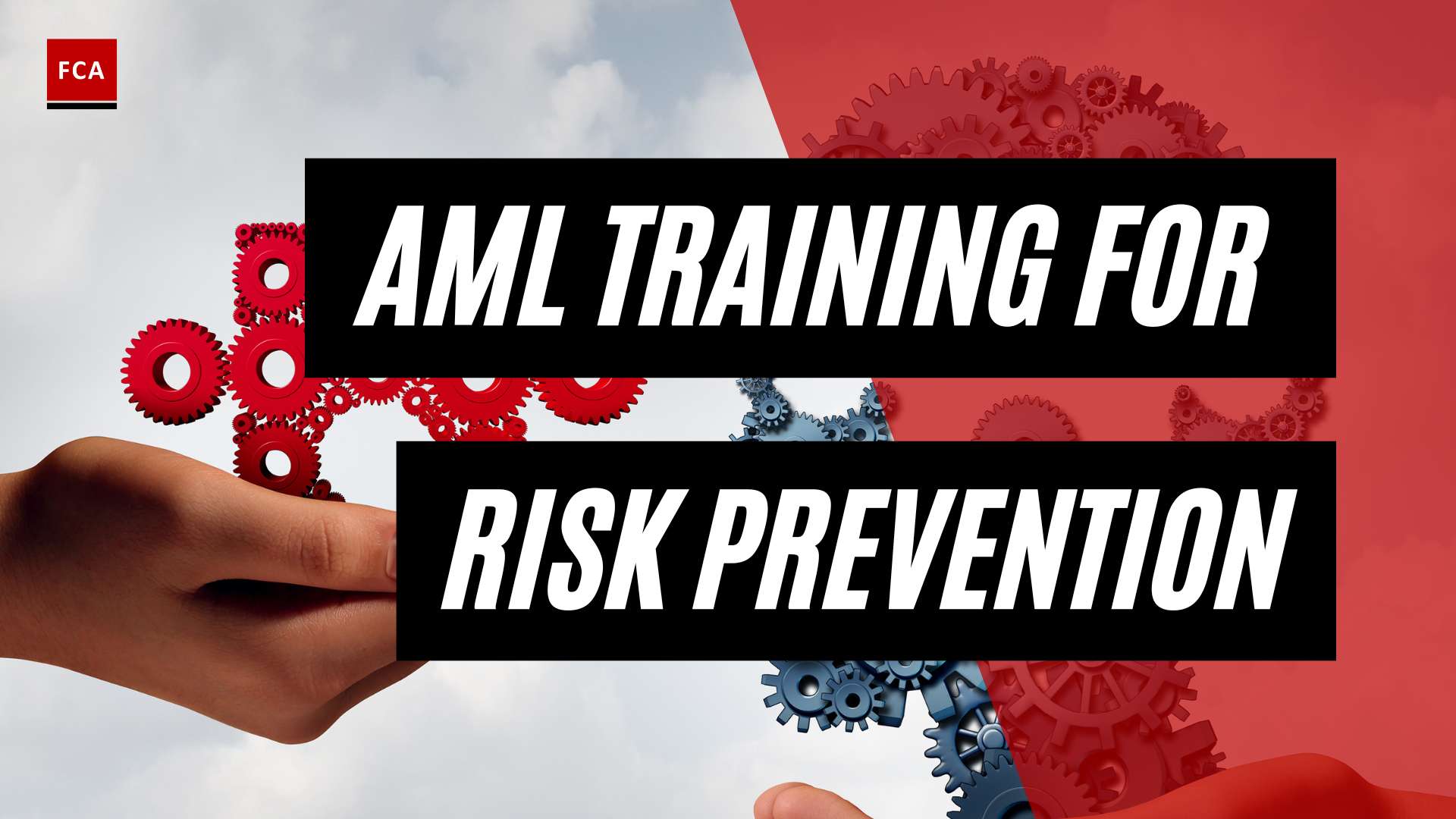Evaluating AML Training Effectiveness
To ensure the effectiveness of Anti-Money Laundering (AML) training programs, thorough evaluation is essential. Assessing the impact of training helps organizations gauge the effectiveness of their efforts and identify areas for improvement. In this section, we will explore key indicators for evaluation, assessing the practical application of knowledge, and measuring awareness and compliance.
Key Indicators for Evaluation
When evaluating the effectiveness of AML training programs, organizations should consider several key indicators. These indicators provide valuable insights into the impact of the training and the effectiveness of the learning outcomes. Key indicators may include:
- Performance outcomes: Evaluating the performance outcomes of participants after completing the training can help measure the practical application of knowledge and skills acquired during the program. This can be done by assessing participants’ ability to identify and report suspicious transactions accurately, effectively manage risks, and ensure compliance with AML regulations.
- Participant knowledge improvement: Conducting pre- and post-training assessments can help measure the knowledge gained by participants during the training. By comparing the results, organizations can determine the extent to which the training has enhanced participants’ understanding of AML concepts, regulations, and best practices.
- Attendee satisfaction surveys: Gathering feedback from participants through satisfaction surveys can provide valuable insights into the overall perception of the training program. Feedback regarding the clarity of the content, effectiveness of the delivery methods, and relevance of the topics covered can help organizations refine their training programs to better meet participants’ needs.
For a comprehensive evaluation, organizations may consider utilizing AML training evaluation metrics that align with their specific goals and objectives.
Assessing Practical Application of Knowledge
Measuring the practical application of knowledge acquired during AML training is crucial for evaluating its effectiveness. Organizations should assess whether participants are able to effectively apply the concepts, techniques, and skills learned in their daily activities. This can be done through:
- On-the-job observations: Evaluating participants’ performance in real-world scenarios can provide valuable insights into their ability to identify and address AML risks. Observations can be conducted by supervisors or designated assessors who monitor participants’ adherence to AML policies and procedures.
- Case studies and simulations: Engaging participants in case studies and simulations that emulate real-life AML scenarios allows them to apply their knowledge in a controlled environment. Assessing their decision-making skills, risk assessments, and ability to follow correct procedures can provide a comprehensive evaluation of their practical application of knowledge.
By assessing the practical application of knowledge, organizations can ensure that the training program equips participants with the necessary skills to effectively combat money laundering and related financial crimes.
Measuring Awareness and Compliance
In addition to evaluating knowledge and practical application, measuring awareness and compliance is crucial for assessing the effectiveness of AML training. This involves assessing participants’ understanding of AML regulations, their awareness of potential risks, and their commitment to compliance. Some approaches to measuring awareness and compliance include:
- Surveys and quizzes: Conducting surveys and quizzes can help organizations gauge participants’ comprehension of AML regulations, policies, and procedures. These assessments can cover topics such as customer due diligence, reporting suspicious activities, and internal controls.
- Compliance audits: Performing periodic compliance audits can provide insights into participants’ adherence to AML regulations and procedures. These audits can identify any gaps in compliance and help organizations implement corrective measures to mitigate risks.
- Monitoring and reporting systems: Implementing robust monitoring and reporting systems allows organizations to track and analyze participants’ adherence to AML requirements. These systems can flag potential compliance issues, enabling timely interventions and corrective actions.
By measuring awareness and compliance, organizations can identify areas where additional training or reinforcement is needed, ultimately strengthening their AML compliance efforts.
Evaluating the effectiveness of AML training programs is crucial for organizations to ensure that their efforts are achieving the desired outcomes. By considering key indicators for evaluation, assessing the practical application of knowledge, and measuring awareness and compliance, organizations can continuously improve their training programs and enhance their AML compliance culture.
Factors in AML Training Evaluation
Assessing the effectiveness of Anti-Money Laundering (AML) training programs is crucial for organizations to ensure their compliance with regulations and mitigate the risks associated with financial crimes. When evaluating AML training, several factors come into play. Two key factors to consider are stakeholder engagement and feedback, as well as performance outcomes and risk reduction.
Stakeholder Engagement and Feedback
Engaging stakeholders in the evaluation process and utilizing their feedback can provide valuable insights into the effectiveness of AML training programs. Stakeholders, such as employees, supervisors, and compliance officers, can offer unique perspectives on the training’s impact and identify areas for improvement. By actively involving stakeholders in the evaluation process, organizations can gain a comprehensive understanding of the training’s strengths and weaknesses.
Collecting feedback can be done through various methods, such as surveys, focus groups, or one-on-one interviews. These feedback mechanisms allow organizations to identify any gaps in knowledge, address specific challenges faced by participants, and tailor future training initiatives accordingly. Additionally, stakeholders’ input can aid in optimizing the overall AML compliance framework within the organization.
Performance Outcomes and Risk Reduction
When evaluating AML training programs, it is crucial to assess their impact on performance outcomes and risk reduction. Effective AML training should equip participants with the necessary knowledge and skills to identify and mitigate potential risks associated with money laundering and financial crimes.
The evaluation should focus on measuring changes in participants’ awareness, understanding, and compliance with relevant laws and regulations. This assessment helps gauge the training’s impact on enhancing the overall compliance culture within the organization. By monitoring and measuring these outcomes, organizations can identify any gaps in knowledge or areas requiring additional training or reinforcement.
Additionally, AML training evaluations should consider the quality of suspicious activity reports (SARs) filed by participants. SARs play a crucial role in detecting and reporting potential money laundering activities. Evaluating the quality of these reports can provide insights into the effectiveness of the training in promoting accurate and comprehensive reporting.
Furthermore, organizations should assess the extent of collaboration between different departments within the organization for AML compliance purposes. Effective communication and collaboration among departments, such as compliance, risk management, and operations, are vital in ensuring a holistic approach to AML compliance.
By considering stakeholder engagement and feedback, as well as performance outcomes and risk reduction, organizations can gain a comprehensive understanding of the effectiveness of their AML training programs. This evaluation process aids in identifying areas of improvement, optimizing future training initiatives, and strengthening the overall AML compliance framework within the organization.
Best Practices for AML Training Evaluation
To ensure the effectiveness of Anti-Money Laundering (AML) training programs, it is essential to follow best practices for evaluation. By employing performance metrics and key performance indicators (KPIs), conducting statistical analysis, and implementing continuous monitoring and reviews, organizations can assess the impact and efficacy of their AML training initiatives.
Performance Metrics and KPIs
Understanding and utilizing key performance indicators (KPIs) is crucial for evaluating the effectiveness of an AML training program. These metrics provide measurable data points that reflect the program’s performance and effectiveness. By tracking and analyzing these metrics, organizations can gain insights into the strengths and weaknesses of their training efforts.
Some common performance metrics and KPIs to consider include:
- Number of alerts generated
- Number of investigations conducted
- Time taken to resolve alerts
- Accuracy of alert disposition
By monitoring these metrics, organizations can assess the efficiency of their AML training program and identify areas for improvement. It is important to establish benchmarks and set targets for these metrics to effectively evaluate the program’s effectiveness. For more information on specific AML training evaluation metrics, refer to our article on aml training evaluation metrics.
Statistical Analysis for Effectiveness
To evaluate the impact of an AML training program, organizations should employ statistical analysis techniques. By collecting, processing, and analyzing relevant data, organizations can gain insights into the program’s effectiveness and identify areas for improvement.
Statistical analysis helps in identifying patterns, trends, and correlations within the training data. It can provide valuable information on the program’s strengths and weaknesses, allowing organizations to make data-driven decisions for program enhancements. This analysis can include evaluating the number of false positives, efficiency of alert resolution, and overall team performance in detecting suspicious activities. For more information on the statistical analysis of AML training effectiveness, refer to our article on measuring aml training impact.
Continuous Monitoring and Reviews
The evaluation of an AML training program should not be a one-time event. Continuous monitoring and periodic reviews are essential to ensure the program’s ongoing effectiveness and relevance in addressing evolving money laundering and terrorist financing risks.
Regular assessments help in adapting the training content, methods, and resources to enhance the overall AML compliance framework. It allows organizations to identify emerging trends, regulatory changes, and new typologies that may require updates to the training program. By staying proactive and responsive, organizations can ensure that their AML training remains effective and aligned with the latest industry standards.
Implementing a system of continuous monitoring and regular reviews enables organizations to identify potential gaps, measure progress, and make necessary adjustments to optimize the AML training program’s effectiveness. For more information on the importance of continuous monitoring and reviews in AML training evaluation, refer to our article on aml training effectiveness measurement.
By following these best practices for AML training evaluation, organizations can effectively assess the impact and effectiveness of their training programs. This ensures that the training efforts align with regulatory requirements, mitigate money laundering risks, and maintain a strong culture of compliance.
AML Training Evaluation Criteria
To ensure the effectiveness of Anti-Money Laundering (AML) training programs, it is essential to establish evaluation criteria that accurately measure the program’s impact. Several key factors can be considered when evaluating the effectiveness of AML training, including false positives and alert resolution, staff awareness and understanding, and the quality of suspicious activity reports (SARs).
False Positives and Alert Resolution
One important criterion for evaluating AML training effectiveness is the number of false positives generated by the system and the efficiency of alert resolution. False positives occur when legitimate transactions are incorrectly flagged as suspicious. A high number of false positives can lead to increased workload and inefficiencies in the AML process. Evaluating the rate of false positives and the effectiveness of alert resolution procedures helps identify areas for improvement in the training program.
Staff Awareness and Understanding
Measuring staff awareness and understanding of AML regulations is crucial for evaluating the effectiveness of training. Employees should have a solid grasp of AML requirements, including their responsibilities, reporting obligations, and knowledge of red flags indicating suspicious activity. Assessing staff awareness and understanding can be done through surveys, quizzes, or interviews to gauge their comprehension of AML concepts and regulations.
Quality of Suspicious Activity Reports
The quality of suspicious activity reports (SARs) filed by employees is another important criterion in evaluating AML training effectiveness. SARs play a vital role in identifying and reporting suspicious transactions or activities that may be indicative of money laundering or other financial crimes. Evaluating the quality of SARs involves assessing whether they contain accurate and relevant information, are filed in a timely manner, and adhere to regulatory requirements. The effectiveness of AML training can be measured by the improvement in the quality of SARs over time.
By incorporating these evaluation criteria into the assessment of AML training programs, organizations can identify areas of strength and areas that require improvement. This allows for targeted training interventions and continuous enhancement of AML compliance efforts.
For more information on assessing the effectiveness of AML training programs, refer to our article on assessing AML training effectiveness. Additionally, you may find it helpful to explore AML training evaluation metrics and methodologies, such as measuring AML training impact and AML training performance assessment.
Importance of AML Training
When it comes to combating money laundering and ensuring compliance, AML (Anti-Money Laundering) training plays a crucial role. By providing employees with the knowledge and skills necessary to detect and prevent money laundering activities, AML training helps protect organizations and the financial system as a whole. Let’s explore the importance of AML training in more detail.
Preventing Money Laundering
One of the primary objectives of AML training is to prevent money laundering. Money laundering involves disguising the origins of illicit funds, making them appear legitimate. AML training equips employees with the tools to recognize suspicious activities and transactions that may indicate money laundering attempts. By understanding the red flags and typologies associated with money laundering, employees can take proactive measures to prevent such activities and protect their organization from inadvertently becoming involved in illegal financial schemes.
Legal Requirements and Compliance
AML training is not only important from a risk management perspective but also due to legal and regulatory requirements. In many jurisdictions, including the United States, AML training is mandated for financial institutions and their employees under the Bank Secrecy Act (BSA) and its implementing regulations (Medium). Other sectors, such as casinos and money services businesses, may also be subject to AML regulations and training requirements.
By providing AML training, organizations demonstrate their commitment to complying with these legal obligations and maintaining a robust AML framework. Compliance with AML regulations not only helps prevent money laundering but also protects organizations from potential legal and reputational risks.
Objectives and Stages of Training Implementation
The objectives of AML training are consistent across organizations, regardless of scale or location. A typical AML training program aims to achieve several key goals, including:
- Ensuring compliance with AML regulations
- Minimizing risks associated with money laundering and financial crimes
- Providing legal protection by reducing the likelihood of the organization being used for money laundering activities (Medium)
To effectively implement AML training, organizations typically follow a structured approach with different stages. These stages may include:
- Needs assessment: Identifying the specific AML training needs of the organization and its employees.
- Design and development: Creating AML training programs that cover essential topics such as AML regulations, recognizing and reporting suspicious activities, and avoiding actions that could lead to legal violations.
- Delivery: Providing the training to employees through various methods such as in-person sessions, online courses, or a combination of both.
- Evaluation: Assessing the effectiveness of the training program by measuring outcomes, gathering feedback, and making improvements as necessary.
By following these stages, organizations can ensure that AML training is implemented effectively and achieves its intended objectives.
AML training is not only essential for compliance and risk management but also for safeguarding the integrity of the financial system. By equipping employees with the knowledge and skills to identify and prevent money laundering activities, organizations can contribute to the broader efforts of combating financial crimes. AML training helps protect organizations, their stakeholders, and the financial system from the detrimental effects of money laundering.
AML Training for Financial Institutions
When it comes to combating money laundering and ensuring compliance with anti-money laundering (AML) regulations, effective training is essential for financial institutions. AML training plays a crucial role in equipping employees with the necessary knowledge and skills to detect, prevent, and report suspicious activities. Let’s explore the role of training in AML compliance, the target audience, and the legal framework surrounding AML training.
Role of Training in AML Compliance
AML training is a critical component of an organization’s efforts to prevent money laundering and comply with regulatory requirements. It helps employees understand the importance of AML, the legal and regulatory framework, and their responsibilities in identifying and reporting suspicious activities. By providing comprehensive training, financial institutions can minimize the risk of being exploited for money laundering purposes (Medium).
An effective AML training program covers various topics, including understanding AML regulations, recognizing red flags of money laundering, conducting customer due diligence, and reporting obligations. By educating employees on these critical areas, financial institutions can enhance their ability to detect and prevent illicit financial activities (Medium).
Target Audience and Legal Framework
AML training is typically required for employees of financial institutions under the Bank Secrecy Act (BSA) and its implementing regulations in the United States. However, other sectors such as casinos and money services businesses may also be subject to AML regulations and training requirements (Medium).
The target audience for AML training in financial institutions includes employees across various departments, such as front-line staff, compliance officers, risk management professionals, and senior management. Each employee plays a crucial role in maintaining AML compliance and preventing money laundering within the organization. By providing targeted training to employees in different roles, financial institutions can ensure that everyone understands their specific responsibilities and obligations (LinkedIn).
To meet regulatory requirements, financial institutions must develop AML training programs that align with the specific legal framework governing their jurisdiction. This includes adherence to laws and regulations related to AML, customer due diligence, suspicious activity reporting, and record-keeping. By staying up-to-date with the legal requirements and tailoring training programs accordingly, financial institutions can ensure their employees receive the necessary knowledge and skills to fulfill their AML obligations (Medium).
Benefits and Role Allocation
Implementing effective AML training programs in financial institutions comes with various benefits. First and foremost, it enhances overall AML compliance by equipping employees with the knowledge and skills required to identify and report suspicious activities. By fostering a culture of compliance, financial institutions can mitigate the risk of money laundering and protect their reputation and integrity.
AML training also helps in role allocation within the organization. By identifying employees’ strengths and expertise, financial institutions can effectively allocate roles and responsibilities related to handling ML/FT red flags, customer onboarding, transaction monitoring, record-keeping, and reporting. This ensures that each employee understands their specific role in maintaining AML compliance, leading to a more efficient and effective AML framework (LinkedIn).
In addition, senior management’s participation in AML training is crucial. They need to have a deep understanding of AML concepts, regulatory requirements, and their role in implementing and overseeing the organization’s AML compliance program. By being well-versed in AML principles, senior management can provide the necessary guidance and support to ensure the success of the AML framework across the organization (LinkedIn).
By investing in comprehensive AML training for financial institutions, organizations can strengthen their AML compliance efforts, protect themselves from potential risks, and contribute to the overall integrity of the financial system.
AML Training in the UAE
In the United Arab Emirates (UAE), AML training plays a crucial role in combating financial crimes and ensuring compliance with the country’s anti-money laundering regulations. Let’s explore the legal requirements and penalties associated with AML training, its contribution to combating financial crimes, and its importance for senior management.
Legal Requirements and Penalties
The legal requirement for AML training in the UAE is outlined in the Federal Decree-Law No. (20) of 2018 on Anti-Money Laundering and Combating the Financing of Terrorism and Financing of Illegal Organizations. According to Article 21 of Cabinet Decision No. (10) of 2019, conducting training programs for employees is one of the duties of the AML Compliance Officer. This highlights the importance of AML training as a mandatory requirement for Financial Institutions, Designated Non-Financial Businesses and Professions (DNFBP), and Virtual Asset Service Providers (VASP) to comply with AML regulations (LinkedIn).
Non-compliance with AML training requirements can lead to penalties, including fines and reputational damage. Ensuring that employees receive proper AML training is essential to avoid these consequences and maintain a robust AML framework.
Contribution to Combating Financial Crimes
AML training plays a vital role in preventing money laundering and combating financial crimes in the UAE. By educating employees on money laundering typologies and red flags, AML training enables them to identify potential threats in routine business operations quickly. This knowledge empowers employees to take appropriate actions, report suspicious activities, and contribute to the government’s efforts in combating money laundering and the financing of terrorism (LinkedIn).
By implementing effective AML training programs, organizations can create a strong line of defense against financial crimes. This not only protects the organization but also helps safeguard the UAE’s financial system and maintain its integrity.
Importance for Senior Management
AML training is not limited to frontline employees; it is equally important for senior management within organizations. Senior management must undergo AML training to understand the basic concepts, regulatory requirements, and their responsibilities in implementing and managing the organization’s AML compliance program. This knowledge enables them to effectively steer the AML framework across the organization and ensure compliance with applicable laws and regulations (LinkedIn).
Furthermore, senior management’s understanding of AML regulations and their role in implementing and overseeing AML compliance is crucial for setting the right tone at the top. Their commitment to AML training sends a strong message to the entire organization about the importance of compliance and fosters a culture of integrity and ethical behavior.
In conclusion, AML training is not only a legal requirement in the UAE but also a critical tool in combating financial crimes. It is essential for organizations to ensure that their employees, including senior management, receive comprehensive AML training to protect themselves, their customers, and the financial system from the risks associated with money laundering and the financing of terrorism.









